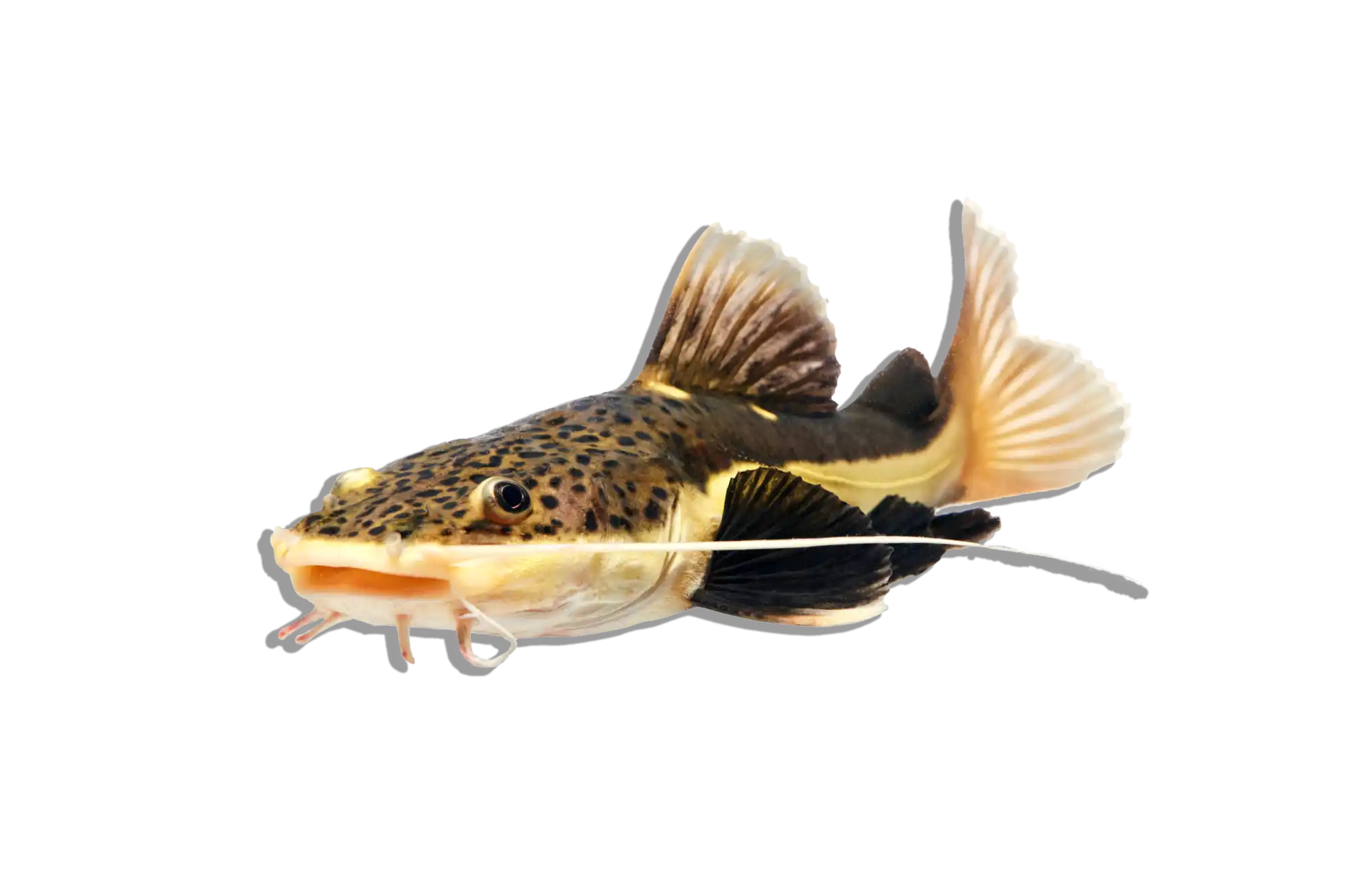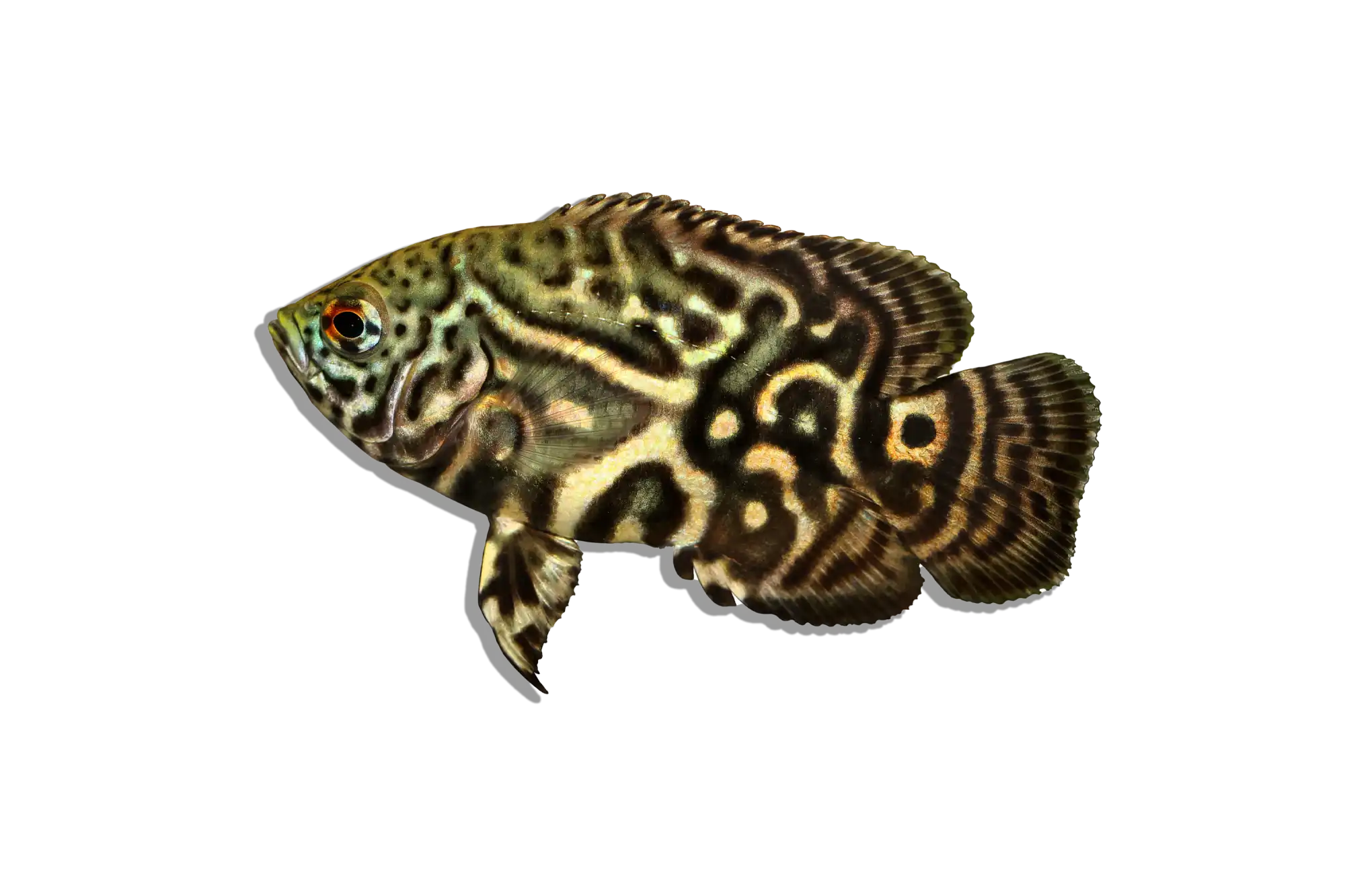Description
Common Name: Marbled Senegal Bichir
Scientific Name: Polypterus senegalus
Other Names: Dinosaur Bichir, Cuvier's Bichir
The Marbled Senegal Bichir is a captivating freshwater fish known for its unique, marbled appearance, which results from selective breeding. This variety exhibits a partially leucistic coloration, with a mix of pale and darker patches creating a striking pattern. Its elongated body, armored with ganoid scales, and multiple dorsal finlets give it a distinctive, prehistoric look. The Marbled Senegal Bichir is both a bottom-dweller and a nocturnal predator, making it an intriguing addition to any aquarium.
Habitat and Distribution: The Marbled Senegal Bichir is a man-made variety, selectively bred in captivity for its unique marbled pattern and partially leucistic coloration. The natural variety of this species, Polypterus senegalus, is native to West and Central Africa, including countries like Senegal, Nigeria, and Cameroon. In the wild, they inhabit slow-moving rivers, floodplains, and swamps with dense vegetation and soft, muddy substrates. They are well-adapted to low-oxygen environments, thanks to their ability to breathe atmospheric air using a specialized lung-like structure. These habitats typically feature warm, slightly acidic to neutral waters with plenty of hiding spots.
Size and Lifespan: In captivity, Marbled Senegal Bichirs typically grow to about 12-16 inches (30-40 cm) in length. Their lifespan can range from 10 to 15 years, depending on the quality of care and living conditions provided in the aquarium. Proper diet, water quality, and tank size are crucial factors that influence their lifespan.
Diet and Behavior: Marbled Senegal Bichirs are carnivorous and have a diet that includes small fish, crustaceans, insects, and other meaty foods. In an aquarium, they should be fed a varied diet of high-quality pellets designed for carnivorous fish, supplemented with live or frozen foods such as bloodworms, brine shrimp, and chopped raw fish. They are nocturnal predators, becoming more active during the night and often hiding during the day. Their behavior is generally peaceful, but they may prey on smaller tank mates.
Breeding and Reproduction: Breeding Marbled Senegal Bichirs in captivity can be challenging due to their specific environmental needs. They are egg scatterers, and successful breeding typically requires a large, well-planted tank with soft, acidic water and a temperature slightly higher than normal. The female scatters her eggs among plants or substrate, and the male fertilizes them. There is no parental care for the eggs or fry, so a separate breeding tank or protective measures are necessary to prevent the eggs from being eaten by other fish.
Aquarium Care and Tank Requirements: To keep Marbled Senegal Bichirs, a large aquarium of at least 75 gallons is recommended to provide ample space for swimming and growth. The tank should include plenty of hiding spots created with rocks, driftwood, and robust plants to mimic their natural habitat and reduce stress. A sandy or fine gravel substrate is ideal, along with moderate water flow to simulate river conditions. Efficient filtration and regular water changes are essential to maintain water quality, as these fish are sensitive to poor conditions. A tightly fitting lid is necessary to prevent escapes, as bichirs are known to be excellent jumpers.
Ideal Tank Mates: Marbled Senegal Bichirs can be kept with other large, peaceful fish that share similar water parameter requirements. Suitable tank mates include large cichlids, catfish, and other bichirs. It is important to avoid housing them with small fish, as they may be seen as prey.
Difficulty Level: Intermediate. While they are hardy and adaptable, their specific dietary needs and nocturnal behavior require attentive care and an understanding of their unique requirements.
Water Parameters:
- Temperature: 75-82°F (24-28°C)
- pH: 6.5-7.5
- General Hardness (GH): 5-20 dGH
- Carbonate Hardness (KH): 4-8 dKH
- Ammonia: 0 ppm (ideal), up to 0.25 ppm (max)
- Nitrite: 0 ppm (ideal), up to 0.25 ppm (max)
- Nitrate: <20 ppm (ideal), up to 40 ppm (max)
Additional Information:
- The Marbled Senegal Bichir's ability to breathe atmospheric air allows it to survive in low-oxygen environments, making it a resilient species in various conditions.
- These fish have a slow growth rate, so patience is required when raising juveniles.
- Fun fact: The bichir’s primitive lungs are a throwback to ancient fish species, providing a fascinating glimpse into the evolutionary history of fish.
- In some African cultures, bichirs are considered a delicacy and are sometimes caught for food. However, they are more commonly appreciated as unique and interesting aquarium inhabitants.





















